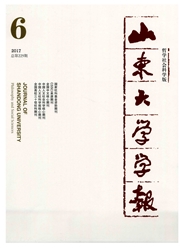

 中文摘要:
中文摘要:
工资上涨主要通过要素替代效应、技术创新效应、人力资本投入效应、效率工资效应及创造性破坏效应等机制促进劳动生产率提升,但工资上涨促进劳动生产率提升存在"门槛效应",过低的工资水平不利于一国劳动生产率的提升,反而使其陷入低工资低生产率陷阱。经借助GMM及非线性内生门槛检验方法对中国省际面板数据进行相关实证分析,结果发现高工资高劳动生产率的结论适用于中国,不同时间段的比较得出近年来工资上涨在中国劳动生产率提升中的作用逐步增强,内生门槛回归得出中国工资劳动生产率的门槛值为年均12693.05元,目前工资越过该门槛值的仅有上海、北京等8个省份,进一步比较分析得出该8个省份的工资上涨在劳动生产率提升中的作用显著高于未跨过门槛值的省份。
 英文摘要:
英文摘要:
The study shows that wage growth stimulates labor productivity through the mechanism of factor substitution effect,technological innovation effect,human capital investment effect,efficiency wage effect and creative destruction effect,but wage growth in enhancing labor productivity has "threshold effect".Low wage level is not conducive to the improvement of labor productivity in a country,instead bringing about a low-wage low-productivity trap.Based on this,this paper does the relative test on China's 29 provincial panel data with the method of GMM and endogenous threshold test.The results show that the conclusion of high wage high labor productivity is suitable in China,and comparison of different periods shows the impact of wage growth in enhancing labor productivity increases gradually in recent years.Endogenous threshold regression calculates the wage labor productivity threshold value is the average annual 12693.05 yuan in China.Only eight provinces,such as Shanghai,Beijing,have overcome the threshold,and further comparative analysis shows wage plays a more significantly part in promoting labor productivity for the eight provinces than other provinces.
 同期刊论文项目
同期刊论文项目
 同项目期刊论文
同项目期刊论文
 期刊信息
期刊信息
